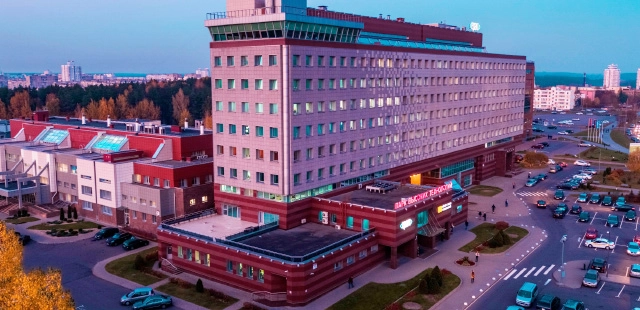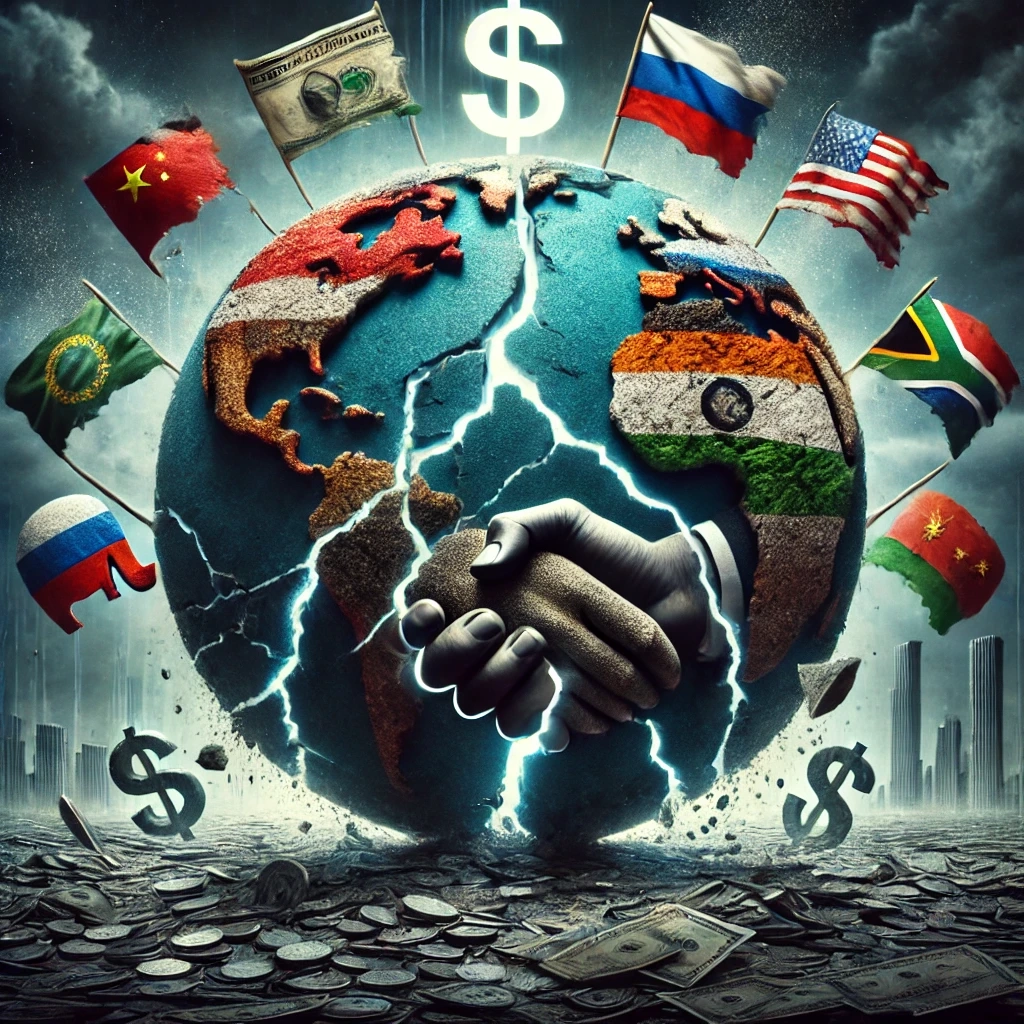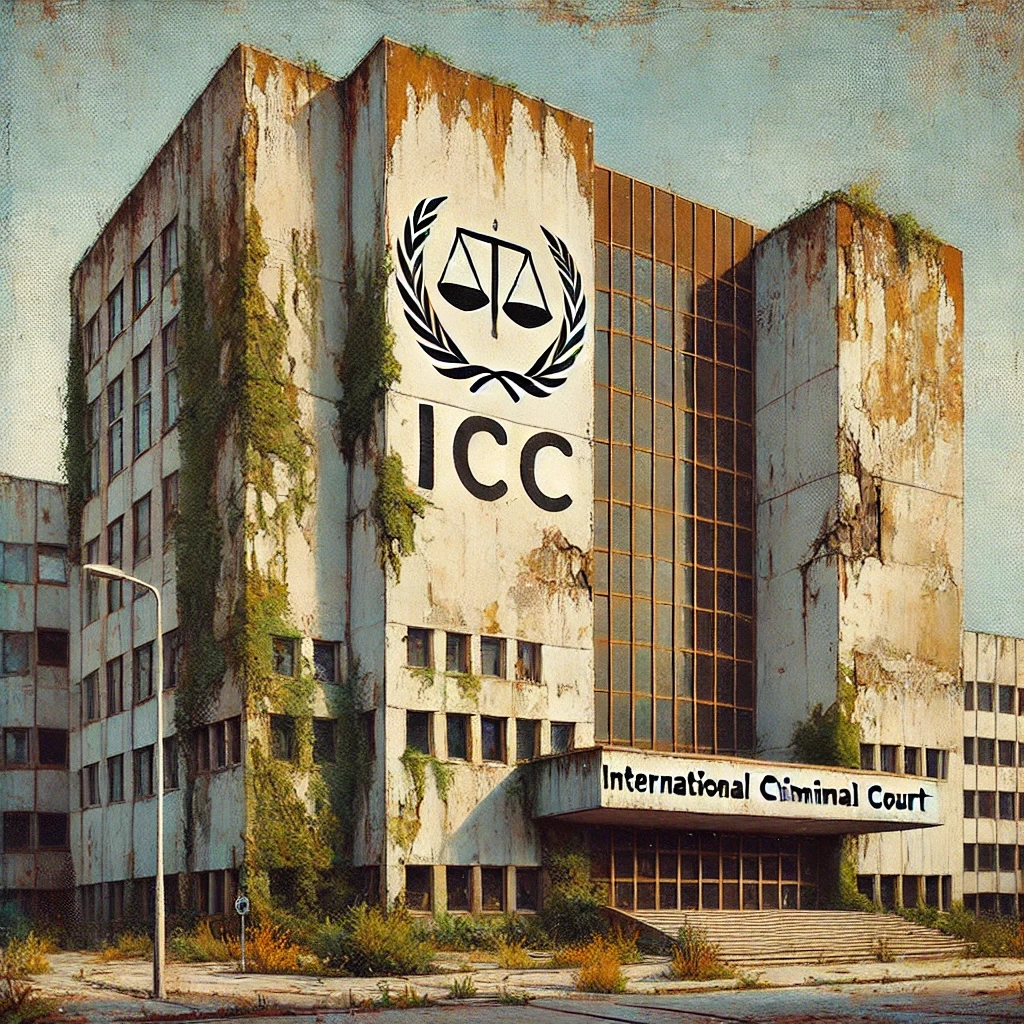Continuation.
Beginning - Belarus High-Tech Park: Memories of the Future
Ildar Daminov – When discussing the development of technology parks, it’s impossible not to mention India. After all, this country is closely associated with the software development industry… IT outsourcing, as we know it today, first took root there!
Valery Tsepkalo – The first time I saw a technology park with my own eyes was in India. In 1995, I visited the country for the first time as part of a diplomatic mission, and perhaps in an effort to impress me, the Indian hosts included a visit to a technology park in my itinerary. At the time, it was still quite rudimentary in terms of construction technology, but amid the surrounding chaos, dirt, and unsanitary conditions, it stood out like an oasis in the desert. A fenced-off area with low-density buildings, air-conditioned offices, and manicured lawns where peacocks roamed freely—all of this sharply contrasted with the overcrowded and impoverished environment just beyond the fence.
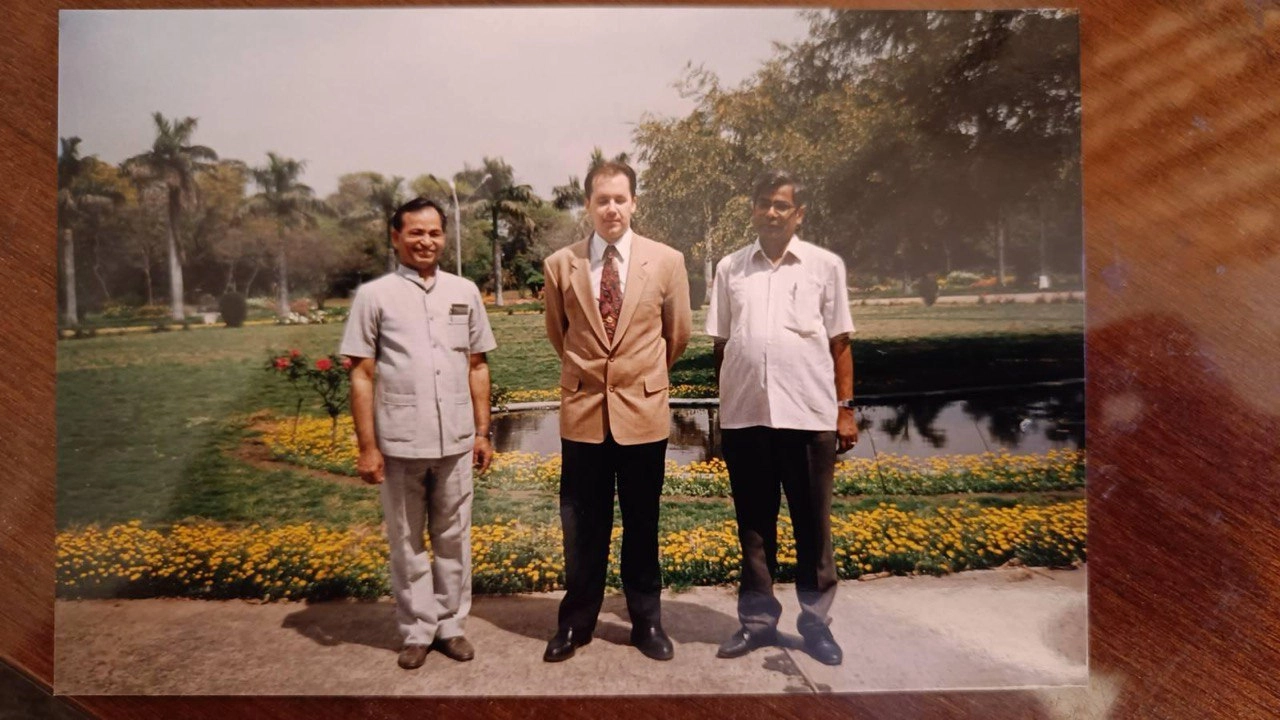
At Bhutani Technopark.
It was there, in an office of an American company—either Texas Instruments or General Electric—that Indian engineers were engaged in software development. This was one of the first real examples of remote work. The internet, as we know it, did not yet exist, so results were transferred via magnetic tapes and disks, sent by couriers, or even faxed as printed pages of code. The process was slow and expensive, but even then, the groundwork was being laid for what would become the digital outsourcing revolution.
My interest in this topic was reignited about five years later, during the official visit of Indian Prime Minister Atal Bihari Vajpayee to the U.S. in 2000. At that time, American newspapers were filled with reports that India’s software exports to the U.S. had reached $3 billion—a figure comparable to Russia’s arms exports. Back then, Russian weaponry enjoyed a global reputation far superior to what it holds today.
India’s achievement in the IT industry was even more remarkable given that, unlike the arms industry—which requires massive investments in energy, expensive raw materials, and complex manufacturing equipment—the IT sector requires virtually no material resources. Its development depends entirely on a well-structured ecosystem that monetizes intangible assets: ideas, expertise, and knowledge.
Around the same time, two professors from Moscow State University published a book providing a detailed analysis of India’s technology park development from 1980 to 2000. This book became one of our most valuable guides for building a software industry, as it meticulously outlined the Indian government’s strategic initiatives, from tax incentives to infrastructure investments.
Following Vajpayee’s visit to the U.S. in 2000, many American companies rushed into India, recognizing the immense potential of its IT workforce. And this extended beyond software development—there was a growing demand for a wide range of outsourced services, including accounting, call centers, and even medical diagnostics. For example, an American patient’s ECG or X-ray would be sent to India, where local doctors would analyze the results, while U.S.-based specialists would verify the diagnosis and recommend treatment.
Some critics labeled this as a new form of remote exploitation, but in reality, it provided India with an invaluable learning opportunity. By working with Western companies, Indian specialists absorbed cutting-edge technologies, project management methodologies, and best software development practices. Over time, Indian firms transitioned from offering purely outsourcing services to developing their own software products, ultimately emerging as global players. Today, this industry is one of India’s key economic drivers, generating over $200 billion in annual exports.
Looking ahead, I can say that, in cooperation with the Indian government, we established the Belarusian-Indian Educational Center named after Rajiv Gandhi—the Indian statesman who modernized India’s economy and IT sector. This center trained Belarusian instructors in India, who, upon returning to Belarus, educated our own specialists.
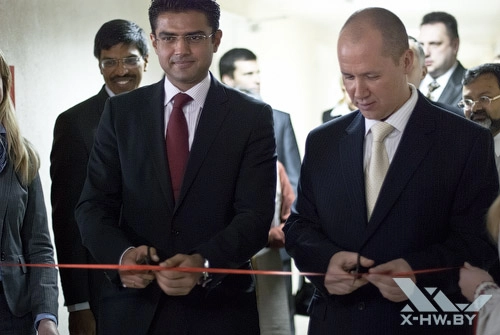
Opening of the Belarusian-Indian Educational Center, attended by Minister of Information Technology Sachin Pilot
Returning to India’s story, once the country’s leadership recognized the immense potential of the IT sector, they began actively facilitating its growth. They introduced additional tax incentives, simplified company registration procedures, and heavily invested in building specialized technology clusters. As a result, India emerged as a global leader in IT outsourcing. It not only became a major source of revenue but also a catalyst for economic growth, with Indian companies transforming into global players that now collaborate with the world’s largest corporations.
India’s experience was a major inspiration to me. After the collapse of the USSR and the ensuing economic crisis, our programmers essentially disappeared from the industry—there was almost no domestic demand for IT specialists. The only exception was Agat Systems, a defense-sector company led by Nikolai Azamatov, who managed to retain his team by securing contracts in the Middle East. But this was an isolated case. Belarusian programmers left the industry altogether, shifting to trade, repair work, and even manual labor on construction sites.
I have always been convinced that our people are no less talented than Americans, Britons, Germans, or the citizens of any other successful nation. What they needed was an environment that nurtured their potential.
Society, after all, is a unique ecosystem. When laws are fairly enforced, and people feel a sense of justice and security, they begin to flourish, develop their talents, and contribute to the growth of others. But if the system oppresses, humiliates, or disregards human dignity, and if authoritarianism and violence dominate, intellectual stagnation follows, thought processes become simplistic, and behaviors regress to primitive survival instincts.
As the saying goes, "Live with wolves, howl like a wolf." Mowgli may be an enchanting figure in fairy tales, but in reality, children raised by animals adopt the behavior of the pack and lose their humanity.
A recent example is Syria. There, people were persecuted for the smallest offenses, imprisoned, tortured, and beaten. They internalized this model of violence, and when the system collapsed, they responded in kind. Their answer to brutality was brutality. Those who had inflicted suffering became the victims of the same kind of "justice"—some were hanged, others stoned, and some were literally torn apart by angry people.
The same principle applies to economic conditions. When a country fosters a healthy business environment, encourages innovation, and enforces fair regulations, business thrives, new jobs are created, wages rise, and prosperity increases. But if bureaucracy, corruption, and government overreach dominate—if enterprises are harassed, shut down, or taken over by insiders at the expense of fair competition—then people grow poorer, businesses stagnate, and talent either emigrates or declines into basic economic survival instincts, focusing solely on securing food and shelter.
I.D. – When we talk about education, we often focus on secondary or higher education, frequently overlooking professional development and retraining programs. What role have such initiatives played in India and other developing countries?
V.T. – Indeed, India became a global leader in information technology largely due to its emphasis on professional training and workforce development. The government launched the National Skill Development Corporation (NSDC), a public-private partnership aimed at large-scale skill development across various industries. Leading companies such as Infosys, Wipro, and Tata Consulting also invested millions of dollars in corporate training for programmers and engineers. In recent years, online education has expanded significantly, further enhancing workforce capabilities. As a result, India’s IT service exports now exceed $200 billion annually.
In Israel, the government has also played a pivotal role in advancing technological education. A particularly notable example dates back to the 1990s, when approximately one million Soviet emigrants arrived following the collapse of the USSR. Among them were about 15,000 scientists, many of whom had previously worked in classified research bureaus.
To support this influx of talent, Israel established the Chief Scientist Office, which managed government grants for scientific, technological, and innovation projects. However, despite hundreds of millions of dollars in investment, most of these projects failed to achieve commercial success—though their social impact, in terms of integrating highly skilled Soviet scientists into the economy, was undeniable.
I vividly recall two projects spearheaded by Soviet scientists: one focused on waste recycling using hydroseparation technology (separating waste with water), and the other on developing gyroscopes for Israeli tanks, which ensured projectiles remained horizontally stable when fired on rough terrain—significantly improving accuracy. The project was led by a former engineer from a Leningrad-based design bureau, who had previously worked on similar stabilization systems for submarines.
However, contrary to popular belief, it was not the Chief Scientist Office that fueled Israel’s technological transformation. The true catalyst for the country's innovation boom was the mass training and retraining of its workforce.
In many ways, this was a necessary adaptation. When one million Soviet emigrants arrived, Israel remained largely an agricultural country, and the kibbutzim could not absorb such a large workforce. Many newcomers had advanced qualifications that were not in demand in their new homeland. For instance, a friend of mine, who studied with me at the Belarusian Technological Institute, found employment immediately because his specialty—Machinery and Equipment for Construction Material Enterprises—was relevant for building new settlements. But what about teachers, accountants, historians, and other professionals?
To address this challenge, the government introduced the "Voucher" program, allowing any migrant to enroll in retraining courses for free at educational centers of their choice. The most prominent of these was John Bryce, founded by a former Israeli military officer. Thanks to this initiative, approximately 500,000 Soviet emigrants acquired new knowledge and skills, greatly strengthening Israel’s human capital.
Another transformative initiative was the Talpiot program, launched within the military to train conscripts and junior officers in advanced technology. Under this program, top recruits received intensive technical education and contributed to developing new technologies. Upon completing their service, they were met at the gates of their military bases by representatives of leading technology companies, who offered them high-paying jobs. As a result, military service in Israel was not merely about marching drills and painting fences—it became a critical educational experience.
Graduates of these programs quickly became highly sought-after specialists for major global tech companies. By the early 1990s, Microsoft, Cisco, IBM, Intel, Motorola, HP, and Sun Microsystems significantly expanded their presence in Israel. The country was well-prepared for the arrival of global technology giants, supplying them with a highly skilled, innovation-driven workforce.
This process can be likened to a two-way street: on one side, the government and private educational initiatives actively trained specialists; on the other, technology companies, drawn by this talent pool, created jobs, funded research, and stimulated further ecosystem growth.
As Israelis gained technical and managerial expertise, they began establishing their own companies. Today, Israel ranks first in the world in the number of startups per capita. Remarkably, this momentum has continued even during wartime. In 2024, Israeli startups attracted $16 billion in investment, underscoring long-term investor confidence in the country. For comparison, this figure is equivalent to the entire annual budget of Belarus—a country similar in population size but far richer in natural resources.
The total export value of Israeli high-tech products stands at $75 billion, while military exports amount to $13 billion. Responding to these shifts, the Chief Scientist Office adjusted its priorities, now focusing on technology parks, incubators, and startups, as these sectors drive the nation's most significant innovations.
Despite hostile neighbors and harsh natural conditions, Israel has transformed a desert into a thriving nation. It has developed a cutting-edge agricultural system (boasting $5 billion in agrarian exports, despite the country's desert climate), a powerful military, and a world-class tech industry. This remarkable transformation has been fueled by strategic investments in education and workforce development, laying the foundation for Israel’s success in the global tech race.
I’d like to emphasize that it was the Israeli experience, rather than the Indian model, that guided our strategy. In India, technology parks are limited to specific geographic zones, whereas in Israel, the entire nation functions as a technological ecosystem. While infrastructure is crucial, it does not necessarily require geographic clustering. This is why we adopted the principle of extraterritoriality—I envisioned the entire country as a High-Tech Park.
Like Israel, we initially focused on outsourcing and competence centers. However, as Belarusian professionals gained technical and managerial expertise, they transitioned into creating product-based companies driven by their own ideas. If investors had confidence in the country, Belarus could have evolved not only as a birthplace of great ideas and startups but also as a hub for their sustained growth, without the need for relocation to foreign jurisdictions. Yet, once IT professionals faced political persecution and arrests, the industry began to decline.
This is what we will discuss next.

